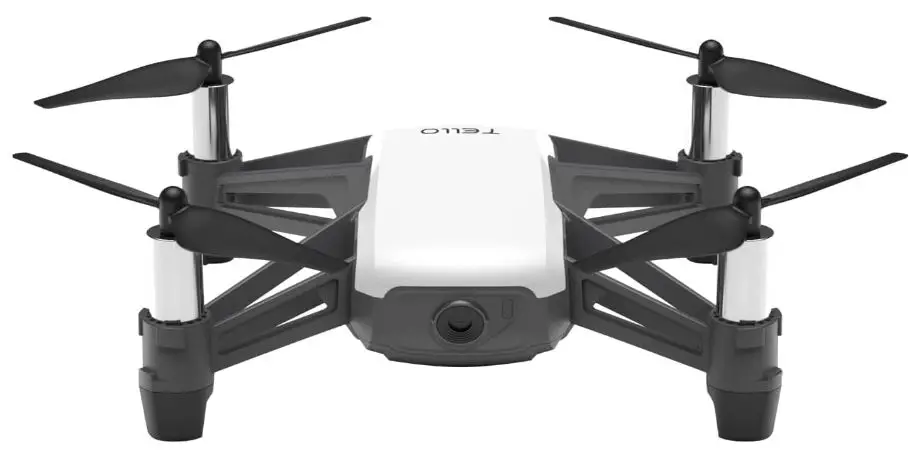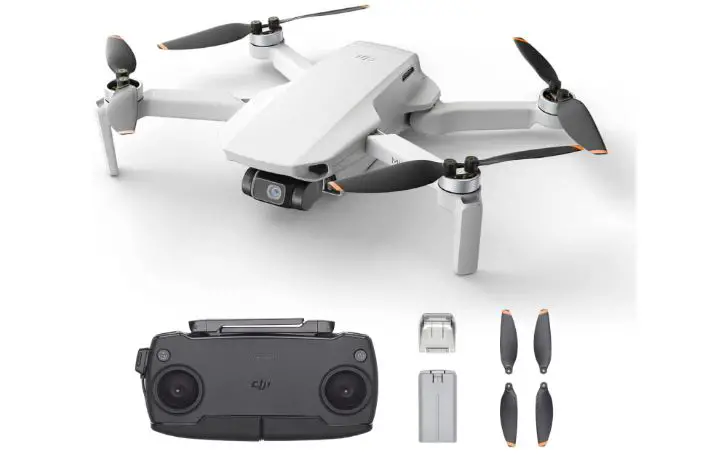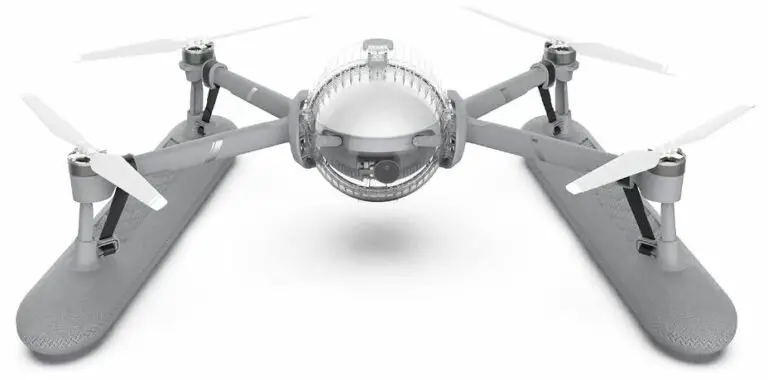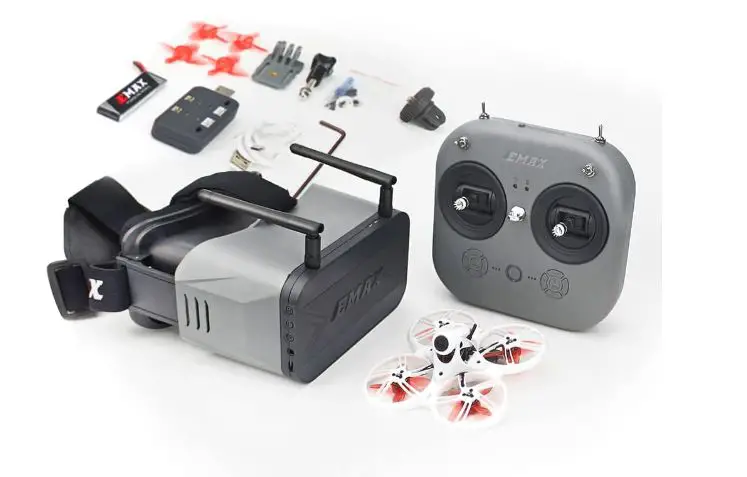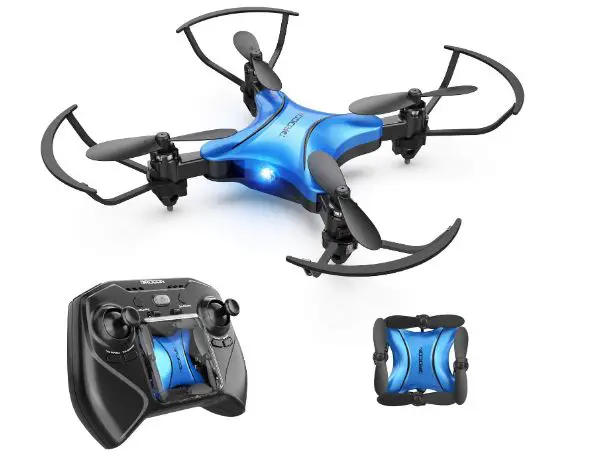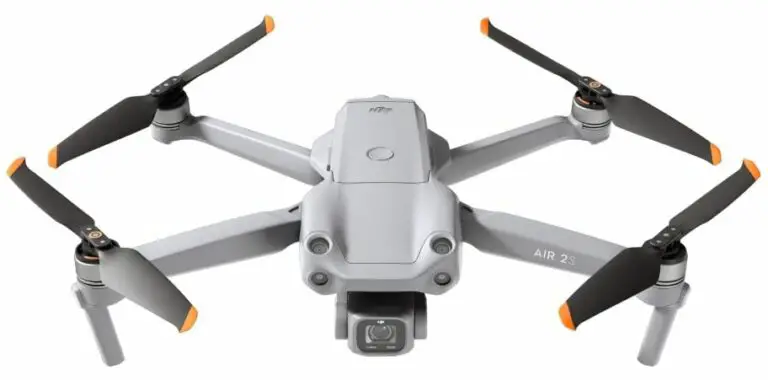Buying a Racing Drone? Things to Know
Introduction
Welcome to the world of racing drones! Whether you’re an experienced pilot looking to dive into the exhilarating world of FPV (First Person View) racing or a newcomer intrigued by the thrill of high-speed aerial maneuvers, this guide is designed to be your comprehensive resource for buying a racing drone.
Racing drones have soared in popularity in recent years, captivating hobbyists, enthusiasts, and professional pilots alike with their agility, speed, and adrenaline-pumping capabilities. With advancements in technology and accessibility, racing drones have become more affordable, versatile, and feature-rich, making them accessible to pilots of all skill levels.
In this guide, we’ll take you through everything you need to know to make an informed decision when purchasing a racing drone. From understanding the key specifications and components to choosing the right drone for your needs, setting it up, flying safely, and troubleshooting common issues, we’ve got you covered.
Whether you’re looking to compete in organized races, explore breathtaking landscapes from a bird’s-eye view, or simply enjoy the thrill of high-speed flight, owning a racing drone opens up a world of possibilities for exploration, creativity, and excitement.
So, fasten your seatbelt, strap on your FPV goggles, and get ready to experience the adrenaline rush of racing drones like never before. Let’s dive in!
Understanding Racing Drone Specifications
Racing drones come in a variety of shapes, sizes, and configurations, each tailored to suit different flying styles, skill levels, and performance requirements. To make an informed decision when purchasing a racing drone, it’s essential to understand the key specifications and components that determine its flight characteristics and capabilities. Here’s a breakdown of the most important specifications to consider:
- Frame Design and Materials:
- The frame is the structural backbone of the racing drone, providing support and protection for the electronic components. Frames are typically made from lightweight materials such as carbon fiber, aluminum, or plastic. Consider the frame design (e.g., X-frame, H-frame) and materials for durability, weight, and crash resistance.
- Motor Types and Kv Ratings:
- Racing drones are equipped with brushless motors that provide the thrust needed for flight. Motors are classified by their stator size (e.g., 2205, 2306) and Kv rating, which indicates the motor’s speed and torque characteristics. Higher Kv motors spin faster but may consume more battery power, while lower Kv motors offer more torque for smoother handling.
- Propeller Sizes and Pitch:
- Propellers are responsible for generating lift and propulsion, and they come in various sizes and pitches. Propeller size is typically denoted by the diameter and pitch (e.g., 5×4.5 inches). Larger propellers provide more thrust but may reduce agility, while higher pitch propellers offer faster acceleration but require more power.
- Flight Controller and Gyroscope:
- The flight controller is the brain of the racing drone, responsible for stabilizing and controlling its flight. Look for a flight controller with advanced features such as gyroscopic stabilization, accelerometer, barometer, and GPS for precise control and navigation.
- Camera and FPV System:
- Racing drones are equipped with onboard cameras and FPV systems that provide real-time video feedback to the pilot’s goggles or monitor. Consider the camera resolution, field of view (FOV), latency, and compatibility with your preferred FPV goggles for immersive flying experience.
- Battery Types and Capacity:
- Racing drones typically use lithium polymer (LiPo) batteries for power, which provide high energy density and discharge rates. Pay attention to the battery voltage (e.g., 3S, 4S, 6S) and capacity (measured in milliampere-hours, mAh) to ensure adequate power for your desired flight time and performance.
Understanding these specifications will help you narrow down your options and choose a racing drone that meets your flying preferences, skill level, and budget. Additionally, consider factors such as build quality, brand reputation, and customer reviews when making your decision. In the next sections, we’ll delve deeper into each specification and provide tips for selecting the right racing drone for your needs.
Choosing the Right Racing Drone
Selecting the perfect racing drone involves considering various factors such as your budget, skill level, flying preferences, and intended use. Here are some key considerations to help you choose the right racing drone:
- Budget Considerations:
- Determine your budget for purchasing a racing drone, including additional costs for accessories such as FPV goggles, batteries, and spare parts. Racing drones are available at a wide range of price points, from affordable entry-level models to high-end racing rigs with advanced features.
- Skill Level and Experience:
- Assess your flying experience and skill level to determine the type of racing drone that best suits your needs. Beginners may prefer ready-to-fly (RTF) models with beginner-friendly features and stable flight characteristics, while experienced pilots may opt for more advanced DIY (do-it-yourself) kits or custom-built drones for customization and performance tuning.
- Racing Class and Regulations:
- Consider the racing class or category you intend to compete in, as well as any local regulations or restrictions that may apply to drone racing in your area. Different racing classes have specific requirements for drone size, weight, power, and equipment, so choose a drone that complies with the rules and specifications of your preferred racing league or organization.
- Ready-to-Fly (RTF) vs. Do-It-Yourself (DIY) Options:
- Decide whether you prefer a ready-to-fly (RTF) racing drone that comes fully assembled and ready to fly out of the box, or if you’re interested in building your own custom drone from scratch or DIY kits. RTF drones are convenient for beginners and casual pilots, while DIY options offer more customization and upgrade possibilities for enthusiasts and hobbyists.
- Flight Performance and Features:
- Consider the flight performance and features of the racing drone, including speed, agility, maneuverability, and stability. Look for drones with high-quality components such as brushless motors, advanced flight controllers, and responsive FPV systems for optimal performance and control.
- Manufacturer Reputation and Support:
- Research the reputation and track record of the drone manufacturer or brand, including customer reviews, ratings, and feedback. Choose a reputable manufacturer with a history of producing reliable, high-quality racing drones and providing excellent customer support and warranty coverage.
- Recommendations and Reviews:
- Seek recommendations and advice from experienced drone pilots, racing enthusiasts, and online communities or forums specializing in drone racing. Read product reviews, comparison guides, and user testimonials to gain insights into the pros and cons of different racing drones and make an informed decision.
By considering these factors and doing thorough research, you can choose the right racing drone that meets your requirements, fits your budget, and provides an exhilarating flying experience. Whether you’re a beginner looking to get started in drone racing or an experienced pilot seeking to upgrade your racing rig, there’s a perfect racing drone out there waiting to take you on thrilling aerial adventures.
Essential Accessories and Add-Ons
- Transmitter (Radio Controller):
- A high-quality transmitter is essential for precise control of your racing drone. Look for a transmitter with reliable signal transmission, ergonomic design, and customizable features such as programmable switches and throttle tension adjustment.
- FPV Goggles or Monitor:
- FPV (First Person View) goggles or a monitor provides real-time video feedback from your drone’s onboard camera, allowing for immersive flying experience. Choose goggles with features like adjustable IPD (interpupillary distance), high-resolution screens, and low latency for optimal performance.
- Batteries and Chargers:
- Invest in multiple LiPo (Lithium Polymer) batteries with sufficient capacity and voltage to power your racing drone through multiple flights. Additionally, choose a high-quality balance charger capable of safely and efficiently charging your batteries, preferably with features like storage mode and adjustable charge rates.
- Tools and Spare Parts:
- Keep a toolkit handy with essential tools for maintenance and repairs, including hex drivers, screwdrivers, pliers, and wire cutters. Stock up on spare parts such as propellers, motors, ESCs (Electronic Speed Controllers), and flight controller boards to quickly replace damaged components and minimize downtime.
- Racing Drone Cases and Backpacks:
- Protect your racing drone during transport and storage with a durable carrying case or backpack designed specifically for drones. Look for cases with customizable foam inserts, padded compartments, and weather-resistant materials to safeguard your equipment from impacts, moisture, and dust.
- Upgrades and Modifications:
- Enhance the performance and capabilities of your racing drone with aftermarket upgrades and modifications. Consider upgrading components such as motors, ESCs, antennas, and propellers to achieve higher speeds, better handling, and improved durability. Additionally, explore accessories like LED lights, GPS modules, and telemetry systems for added functionality and customization options.
- Antennas and FPV Accessories:
- Improve the range and signal quality of your FPV system with high-gain antennas, diversity receivers, and video transmitters. Experiment with different antenna types (e.g., circular polarized, patch, helical) and mounting configurations to optimize signal reception and minimize interference for a smoother FPV experience.
- Action Cameras and Mounts:
- Capture stunning aerial footage and share your racing adventures with an action camera mounted on your racing drone. Choose a lightweight, durable camera with features like 4K resolution, image stabilization, and wide-angle lenses for high-quality recordings. Invest in sturdy camera mounts or gimbals to ensure stable footage and minimize vibrations during flight.
By investing in these essential accessories and add-ons, you can enhance the performance, durability, and versatility of your racing drone while maximizing your flying experience. Whether you’re a beginner getting started in FPV racing or an experienced pilot looking to take your skills to the next level, having the right accessories can make all the difference in your racing adventures.
Researching and Comparing Racing Drones
Researching and comparing racing drones is an essential step in finding the best drone to suit your needs and preferences. Here’s a guide on how to effectively research and compare racing drones:
- Identify Your Requirements:
- Determine your budget, skill level, and intended use for the racing drone. Consider whether you’re a beginner looking for an entry-level model or an experienced pilot seeking high-performance features for competitive racing.
- Online Resources and Forums:
- Explore online resources and forums dedicated to FPV racing and drone enthusiasts. Websites, blogs, and forums such as FPVLab, RCGroups, and Reddit’s r/fpvracing are valuable sources of information, reviews, and discussions on racing drones.
- Product Reviews and Ratings:
- Read product reviews and ratings from reputable sources such as tech websites, YouTube channels, and online retailers. Look for detailed reviews that cover aspects like build quality, flight performance, durability, and value for money.
- Comparison Websites and Tools:
- Utilize comparison websites and tools to compare specifications, features, and prices of different racing drones. Websites like RotorBuilds, GetFPV, and DroneChart allow you to filter and compare drones based on criteria such as frame size, motor type, camera resolution, and price range.
- Manufacturer Websites and Specifications:
- Visit manufacturer websites to explore their range of racing drones and review detailed specifications, product descriptions, and technical specifications. Pay attention to key features such as frame design, motor specs, flight controller, camera quality, and FPV system.
- Seek Recommendations and Feedback:
- Seek recommendations and feedback from experienced pilots, local hobby shops, and online communities. Ask for advice on reliable brands, popular models, and best practices for selecting and configuring racing drones.
- Demo Days and Racing Events:
- Attend demo days, racing events, and meetups in your area to see racing drones in action and interact with fellow pilots. Participate in races, demonstrations, and workshops to gain hands-on experience and learn from experienced pilots.
- Consider Customization and Upgradability:
- Evaluate the customization and upgradability options offered by different racing drones. Look for models that allow for easy customization and upgrades, such as modular frames, compatible components, and open-source firmware.
- Check Availability and Support:
- Check the availability of spare parts, accessories, and technical support for the racing drone you’re considering. Choose a brand with a reliable supply chain and responsive customer support to ensure prompt assistance and access to replacement parts when needed.
By conducting thorough research and comparisons, you can make an informed decision and select a racing drone that meets your needs, preferences, and budget. Take your time to explore different options, gather feedback from experienced pilots, and consider factors like build quality, performance, and support before making your final decision.
Purchasing and Ordering Process
- Choose a Reputable Retailer:
- Start by selecting a reputable retailer or online store specializing in racing drones and FPV equipment. Look for retailers with a wide selection of products, competitive prices, and positive customer reviews.
- Browse Product Catalog:
- Browse the retailer’s product catalog to explore the range of racing drones available. Filter your search based on criteria such as brand, price range, specifications, and features to narrow down your options.
- Read Product Descriptions:
- Read the product descriptions and specifications carefully to understand the key features, components, and capabilities of each racing drone. Pay attention to details such as frame design, motor type, camera resolution, and FPV system.
- Check Availability and Stock:
- Verify the availability and stock status of the racing drone you’re interested in purchasing. Check for any special offers, discounts, or promotions that may be available, and compare prices across different retailers to ensure you’re getting the best deal.
- Add to Cart and Checkout:
- Once you’ve selected the racing drone you want to purchase, add it to your shopping cart and proceed to checkout. Review your order summary, including the item(s), quantity, price, and shipping details, before proceeding with the payment.
- Choose Payment Method:
- Choose your preferred payment method from the available options, which may include credit/debit card, PayPal, bank transfer, or alternative payment gateways. Ensure that the payment process is secure and encrypted to protect your personal and financial information.
- Provide Shipping Information:
- Enter your shipping address and contact details accurately to ensure smooth delivery of your racing drone. Specify any special instructions or delivery preferences, such as expedited shipping or signature confirmation, if available.
- Review and Confirm Order:
- Review your order details one last time to verify the accuracy of the information provided. Double-check the item(s), quantity, price, shipping method, and billing information before confirming your order.
- Place Order and Receive Confirmation:
- Place your order by clicking the “Submit” or “Place Order” button, and wait for the confirmation page to appear. You should receive an email confirmation shortly afterward, containing your order details, tracking information, and estimated delivery date.
- Track Order Status:
- Monitor the status of your order by tracking the shipment using the provided tracking number. Most retailers offer order tracking services through their website or via email notifications, allowing you to stay informed about the progress of your delivery.
- Receive and Inspect Package:
- Once your racing drone arrives, carefully inspect the package for any signs of damage or tampering during transit. Open the package and check that all included components are present and in good condition, including the drone, transmitter, batteries, and accessories.
- Contact Customer Support if Needed:
- If you encounter any issues with your order, such as missing or damaged items, discrepancies in product specifications, or delivery delays, contact the retailer’s customer support team for assistance. Provide relevant details about your order and any concerns you may have to expedite the resolution process.
By following these steps, you can ensure a smooth and hassle-free purchasing experience when buying a racing drone online or from a retail store. Be sure to read the retailer’s terms and conditions, return policy, and warranty information before completing your purchase to understand your rights and obligations as a customer.
Setting Up and Configuring Your Racing Drone
Setting up and configuring your racing drone is essential to ensure optimal performance and flight characteristics. Here’s a step-by-step guide to help you get started:
- Unboxing and Inspection:
- Carefully unbox your racing drone and inspect each component for any signs of damage or defects. Ensure that all parts, including the frame, motors, propellers, flight controller, and FPV system, are present and undamaged.
- Assembling the Drone Components:
- Follow the manufacturer’s instructions to assemble the drone components, starting with the frame. Attach the motors to the arms of the frame using the provided screws and secure them in place. Install the flight controller, ESCs (Electronic Speed Controllers), and other electronic components according to the wiring diagram provided.
- Installing and Calibrating the Flight Controller:
- Mount the flight controller securely on the frame and connect it to the ESCs, receiver, and other peripherals as per the manufacturer’s instructions. Power on the drone and connect it to a computer or mobile device to calibrate the flight controller using the appropriate software or firmware. Follow the calibration procedure to ensure accurate sensor readings and stable flight performance.
- Binding Transmitter and Receiver:
- Bind the transmitter (radio controller) to the receiver installed in your racing drone. Follow the transmitter’s instructions for binding mode and pair it with the receiver by pressing the bind button or following the specified procedure. Verify that the transmitter and receiver are communicating successfully by checking for solid LED indicators or confirmation tones.
- Testing Motors, Props, and Electronics:
- Power on the racing drone and test each motor, propeller, and electronic component to ensure they are functioning correctly. Verify that each motor spins in the correct direction and at the same speed when throttle inputs are applied. Check for any abnormal vibrations, noises, or heating issues that may indicate a malfunctioning component.
- Configuring Flight Modes and Settings:
- Configure the flight modes and settings on your racing drone’s flight controller to suit your flying preferences and skill level. Customize parameters such as throttle curves, rates, expo, PID (Proportional-Integral-Derivative) settings, and arming/disarming procedures using the flight controller’s software or configurator tool. Adjust settings gradually and test the drone’s responsiveness in a safe, open area to fine-tune its flight characteristics.
- Mounting and Configuring FPV System:
- Install the FPV camera, video transmitter (VTX), and antenna on your racing drone according to the manufacturer’s instructions. Connect the FPV system to the flight controller or power distribution board and configure video channels, frequencies, and transmission power settings as needed. Adjust camera angles and settings to optimize your field of view (FOV) and video quality for FPV flying.
- Performing Pre-flight Checks:
- Perform pre-flight checks and inspections before each flight to ensure the racing drone is in proper working condition. Check the battery voltage, propeller tightness, motor functionality, and overall structural integrity of the drone. Verify that all connections are secure and that the FPV system is transmitting video feedback to your goggles or monitor.
- Safety Precautions and Flight Planning:
- Practice safety precautions and adhere to local regulations and guidelines for safe drone operation. Choose a suitable flying location away from people, property, and restricted airspace, and plan your flight path accordingly. Maintain line of sight (LOS) with the drone at all times and be prepared to take corrective action in case of emergencies or unexpected events.
- Flight Testing and Tuning:
- Conduct flight tests in a controlled environment to evaluate the performance and handling of your racing drone. Gradually increase throttle and maneuvering inputs to assess stability, agility, and responsiveness. Use flight data logs, telemetry feedback, and on-board OSD (On-Screen Display) information to monitor key flight parameters and make adjustments as needed to optimize your drone’s performance.
By following these steps, you can set up and configure your racing drone effectively, ensuring that it performs optimally and meets your expectations for speed, agility, and control. Remember to practice safe flying practices and conduct regular maintenance to keep your drone in top condition for racing and recreational flying.
Safety Guidelines and Best Practices
- Know and Follow Local Regulations:
- Familiarize yourself with the laws and regulations governing drone operation in your area, including airspace restrictions, flight altitude limits, and registration requirements. Follow all applicable rules and guidelines set forth by aviation authorities and regulatory agencies to avoid fines, penalties, and legal consequences.
- Choose Safe Flying Locations:
- Select safe and suitable flying locations away from populated areas, buildings, roads, and other obstacles. Choose open fields, parks, or designated flying areas with minimal risk of injury or property damage. Avoid flying near airports, helipads, or sensitive facilities, and respect any posted signage or warnings.
- Maintain Line of Sight (LOS):
- Maintain visual line of sight (LOS) with your racing drone at all times during flight. Keep the drone within your direct line of sight to maintain situational awareness and prevent collisions with obstacles or other aircraft. Use a spotter or observer to assist with maintaining LOS and monitoring the drone’s position, especially during high-speed maneuvers or long-range flights.
- Fly Responsibly and Respectfully:
- Fly your racing drone responsibly and respectfully, taking into account the safety and privacy of others. Avoid flying over people, crowds, or private property without permission, and respect the rights and concerns of bystanders. Be courteous and considerate of other airspace users, including manned aircraft, wildlife, and recreational users.
- Practice Safe Flying Techniques:
- Practice safe flying techniques and maneuvers to minimize the risk of accidents and collisions. Start with slow, controlled flights to familiarize yourself with the drone’s handling characteristics before attempting more advanced maneuvers. Maintain a safe distance from obstacles, maintain altitude awareness, and avoid aggressive or reckless flying behavior.
- Perform Pre-flight Checks:
- Conduct pre-flight checks and inspections before each flight to ensure your racing drone is in proper working condition. Check the battery voltage, propeller tightness, motor functionality, and overall structural integrity of the drone. Verify that all connections are secure and that the FPV system is transmitting video feedback to your goggles or monitor.
- Monitor Weather Conditions:
- Monitor weather conditions and forecasts before flying your racing drone. Avoid flying in adverse weather conditions such as high winds, rain, snow, or fog, which can affect flight stability and visibility. Be aware of temperature extremes that may affect battery performance and flight endurance, and adjust your flying plans accordingly.
- Emergency Procedures:
- Be prepared to respond to emergencies or unexpected situations during flight. Have a plan in place for safely landing the drone in case of loss of control, signal interference, or low battery voltage. Practice emergency procedures such as failsafe activation, return-to-home (RTH) functions, and manual recovery maneuvers to mitigate the risk of crashes or flyaways.
- Stay Informed and Educated:
- Stay informed about developments, updates, and best practices in the drone industry through online resources, forums, and community groups. Participate in training programs, workshops, and educational events to improve your skills and knowledge of safe drone operation. Seek guidance from experienced pilots and instructors to learn from their expertise and experiences.
- Respect Wildlife and Environment:
- Respect wildlife and the natural environment when flying your racing drone. Avoid disturbing or harassing wildlife, nesting areas, or sensitive habitats, and adhere to any wildlife protection regulations or guidelines. Minimize your impact on the environment by disposing of waste responsibly and respecting local conservation efforts.
By following these safety guidelines and best practices, you can enjoy the excitement and thrill of racing drones while minimizing risks to yourself, others, and the environment. Remember that safety is paramount, and responsible drone operation is essential for ensuring a positive and enjoyable flying experience for everyone.
Troubleshooting Common Issues
- Motor or Propeller Issues:
- Problem: One or more motors or propellers are not functioning properly or are producing abnormal vibrations or noise.
- Solution: Check for loose or damaged propellers, bent motor shafts, or debris obstructing the propellers. Replace damaged propellers or motors as needed and ensure that all components are securely fastened and balanced.
- Flight Controller Calibration Errors:
- Problem: The racing drone exhibits unstable flight behavior, drifts or veers off course, or fails to respond accurately to control inputs.
- Solution: Re-calibrate the flight controller using the manufacturer’s recommended procedure, ensuring that the accelerometer, gyroscope, and compass sensors are properly calibrated. Check for any magnetic interference or environmental factors that may affect sensor readings.
- FPV System Interference or Dropout:
- Problem: The FPV video feed experiences interference, dropout, or signal loss, resulting in poor video quality or loss of connectivity.
- Solution: Check the antennas, video transmitter (VTX), and receiver (VRX) for loose connections or damaged components. Ensure that the antennas are properly oriented and securely mounted to minimize signal attenuation or multipath interference. Experiment with different video channels and frequencies to find a clear, interference-free transmission.
- Battery and Power Issues:
- Problem: The racing drone experiences sudden power loss, voltage sag, or short flight times, indicating battery or power system issues.
- Solution: Check the battery voltage and capacity to ensure it meets the drone’s power requirements and discharge rate. Inspect the battery connectors, wires, and solder joints for signs of damage or corrosion. Replace old or damaged batteries and use a balanced charger to properly charge and maintain the batteries.
- Physical Damage and Repair Options:
- Problem: The racing drone sustains physical damage from crashes, collisions, or hard landings, resulting in broken frames, damaged components, or structural deformities.
- Solution: Inspect the drone for visible signs of damage and assess the extent of the impact. Replace broken or damaged components such as frames, arms, motors, ESCs, or propellers as needed. Use adhesive, epoxy, or soldering techniques to repair minor damage or reinforce weak points in the frame.
- Flight Controller Tuning and PID Adjustments:
- Problem: The racing drone exhibits oscillations, wobbles, or instability during flight, indicating tuning or PID (Proportional-Integral-Derivative) control issues.
- Solution: Fine-tune the flight controller settings, including PID gains, rates, and filters, to optimize stability and responsiveness. Use a flight controller configurator tool or software to adjust parameters gradually and test the drone’s performance in a controlled environment. Monitor flight data logs and telemetry feedback to assess the impact of tuning adjustments and make further refinements as needed.
- GPS or Compass Calibration Errors:
- Problem: The racing drone experiences GPS or compass calibration errors, causing position drift, inaccurate navigation, or loss of GPS lock.
- Solution: Calibrate the GPS and compass sensors according to the manufacturer’s instructions, ensuring that the drone is positioned in an open, interference-free area during calibration. Check for magnetic interference sources such as motors, ESCs, or metal objects that may affect compass readings. Recalibrate the sensors periodically or after significant changes in location or environmental conditions.
- Radio Frequency (RF) Interference:
- Problem: The racing drone experiences interference or signal dropout from nearby RF sources, such as Wi-Fi networks, radio towers, or other radio-controlled devices.
- Solution: Identify and eliminate sources of RF interference by relocating the drone to a different flying location or adjusting the operating frequencies and channels of the transmitter and receiver. Use frequency scanning tools or spectrum analyzers to identify and avoid congested RF bands, and consider using shielded cables or ferrite beads to reduce interference.
- Software and Firmware Updates:
- Problem: The racing drone’s software or firmware is outdated or incompatible with the flight controller or peripherals, leading to performance issues or functionality limitations.
- Solution: Check for software and firmware updates for the flight controller, ESCs, FPV system, and other components, and apply the latest updates as recommended by the manufacturer. Follow the update instructions carefully to avoid errors or data loss, and ensure that all components are compatible with the updated firmware versions.
- Seek Expert Assistance:
- If you encounter persistent or complex issues with your racing drone that cannot be resolved through troubleshooting, seek assistance from experienced pilots, technicians, or customer support representatives. Reach out to online forums, community groups, or manufacturer support channels for guidance, advice, and troubleshooting assistance.
By following these troubleshooting tips and techniques, you can diagnose and resolve common issues with your racing drone effectively, ensuring optimal performance and reliability for your flying adventures. Keep a log of troubleshooting steps, repairs, and modifications to track your progress and learn from your experiences as a drone pilot.
FAQs
What is a racing drone?
A racing drone is a compact, maneuverable, and highly effective unmanned aerial vehicle created for drone racing competitions. These drones are designed for agility, speed, and frequently have first-person vision (FPV) systems for thrilling racing experiences.
What should I consider before buying a racing drone?
- Skill Level: Racing drones require piloting skills. If you’re new to drones, consider starting with a beginner-friendly model before moving to a racing drone.
- Budget: Racing drones can range in price. Determine how much you’re willing to spend and stick to that budget.
- Build vs. Ready-to-Fly (RTF): Building a drone from scratch can be rewarding but requires technical knowledge. RTF drones come preassembled.
- Features: Consider features like FPV capabilities, camera quality, flight time, and customization options.
What is FPV?
FPV stands for First-Person View. It’s a system that allows you to see what the drone sees in real time through a video feed transmitted to your goggles or monitor. FPV is essential for racing drones as it provides an immersive racing experience.
How important is the camera quality?
Camera quality impacts your racing experience and video recording. Look for drones with cameras that offer good resolution and low latency for smooth FPV.
What is meant by “brushless” motors?
The power and efficiency of brushless motors are higher than those of brushed motors. For racing drones, their higher power output, improved control, and longer lifespan are crucial.
Conclusion
Buying a racing drone is an exciting endeavor that opens the door to thrilling aerial adventures. By considering your budget, skill level, drone specifications, FPV gear, and community support, you can make an informed decision that aligns with your preferences and goals. Remember to prioritize safety and responsible flying as you delve into the world of racing drones.

